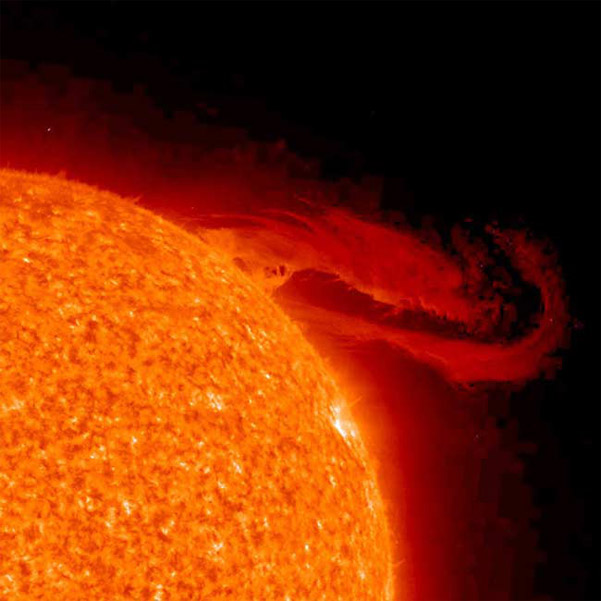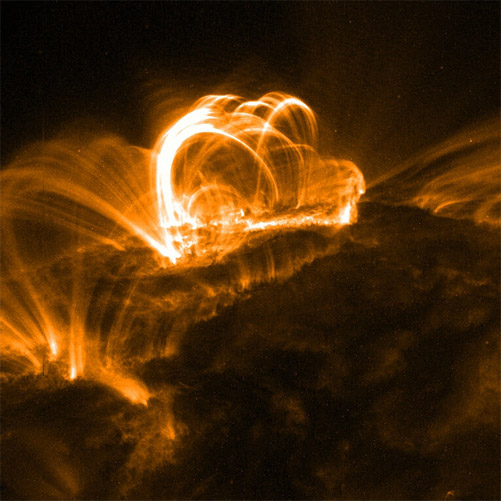Solar Prominences

This is a NASA image of a huge solar prominence on September 29, 2008, obtained as a part of the STEREO Project. The data was taken at a wavelength of 304 nm in the ultraviolet. The event rose over a period of several hours like a flag unfurling and then broke apart and headed into space. The material involved is ionized helium at about 60,000 Kelvin. The size of this prominence is many times the size of the Earth, as can be seen in a relative scale image of the Earth and Sun.
While sunspots are relatively cool and quiescent regions on the Sun, the photosphere around them sometimes erupts with outflows of high energy particles in active regions. Most often these eruptions are in the form of loops and sheets called prominences which remain under the control of the intense magnetic fields associated with solar storms. There are other events which in a matter of minutes can release enormous amounts of energy and eject material out into space. Such violent events are called solar flares.
Solar prominences are typically observed to be high loops of hot ionized gases which follow the geometry of the magnetic fields associated with pairs of sunspots. According to Chaisson & McMillan, the size of a typical solar prominence is on the order of 100,000 km or around 10 times the diameter of Earth. Larger ones can reach a half-million kilometers. Prominences can show surges in time scales of hours, but the quiescent ones can persist for days or weeks. The energy release of the largest prominences can be on the order of 1025 joules, compared to a total energy release of the Sun on the order of 1026 joules/sec.
 | This NASA image shows the looping structure of the ionized gases of prominences as controlled by the magnetic fields of the sunspot pairs. |
A more isolated prominence shows the looping geometry. |  |
Solar System Illustration
Solar System Concepts
Sun Concepts
Reference
Chaisson & McMillan
Sec 16.4
| HyperPhysics********** Astrophysics | R Nave |